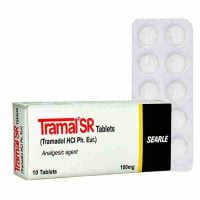Description
I. Introduction
A. Explanation of Ketalar Injection B. Purpose of the article C. Overview of the article
II. What is Ketalar Injection?
A. Definition of Ketalar Injection B. Chemical makeup of Ketalar Injection C. History of Ketalar Injection
III. How Ketalar Injection Works
A. Mechanism of action B. Effects on the body C. Dosage and administration
IV. Uses of Ketalar Injection
A. Anesthesia B. Sedation C. Pain management
V. Side Effects of Ketalar Injection
A. Short-term side effects B. Long-term side effects C. Risks and precautions
VI. Alternatives to Ketalar Injection
A. Other anesthetics B. Other sedatives C. Other pain management options
VII. How to Obtain Ketalar Injection
A. Prescription requirements B. Availability C. Cost
VIII. Conclusion
A. Summary of the article B. Final thoughts on Ketalar Injection
I. Introduction
Ketalar Injection is a medication used for anesthesia, sedation, and pain management. It is a dissociative anesthetic, which means it produces a trance-like state that separates the patient from reality. Ketalar Injection is a brand name for the drug ketamine hydrochloride, which is a controlled substance in the United States.
The purpose of this article is to provide an overview of Ketalar Injection, including its uses, side effects, and alternatives. The article will also cover how to obtain Ketalar Injection, including prescription requirements, availability, and cost.
II. What is Ketalar Injection?
Ketalar Injection is a medication used for anesthesia, sedation, and pain management. It is a clear, colorless liquid that is injected into a vein or muscle. Ketalar Injection is a brand name for the drug ketamine hydrochloride, which is a controlled substance in the United States.
Ketamine was first synthesized in 1962 and was initially used as an anesthetic for animals. It was later used in humans as an anesthetic during the Vietnam War. Ketamine was found to be useful in combat situations because it could be used without the need for specialized equipment and could be administered quickly.
III. How Ketalar Injection Works
Ketalar Injection works by blocking the N-methyl-D-aspartate (NMDA) receptor in the brain. This receptor is involved in the transmission of pain signals and is also involved in learning and memory. By blocking this receptor, Ketalar Injection can reduce pain and produce a dissociative state.
Ketalar Injection is administered either intravenously or intramuscularly. The dosage and administration depend on the intended use of the medication.
IV. Uses of Ketalar Injection
Ketalar Injection has several uses, including anesthesia, sedation, and pain management.
A. Anesthesia
Ketalar Injection can be used as an anesthetic for short procedures, such as dental work or minor surgeries. It produces a dissociative state that separates the patient from reality and reduces pain. Ketalar Injection is also used in emergency situations, such as when a patient is in shock or has a traumatic injury.
B. Sedation
Ketalar Injection can be used to sedate patients for procedures that do not require general anesthesia. It is often used for procedures that are uncomfortable, such as bone marrow biopsies or colonoscopies.
C. Pain management
Ketalar Injection can be used to manage acute and chronic pain. It is often used for patients who have chronic pain that has not responded to other treatments.
V. Side Effects of Ketalar Injection
Ketalar Injection can cause short-term and long-term side effects. Short-term side effects






Reviews
There are no reviews yet.